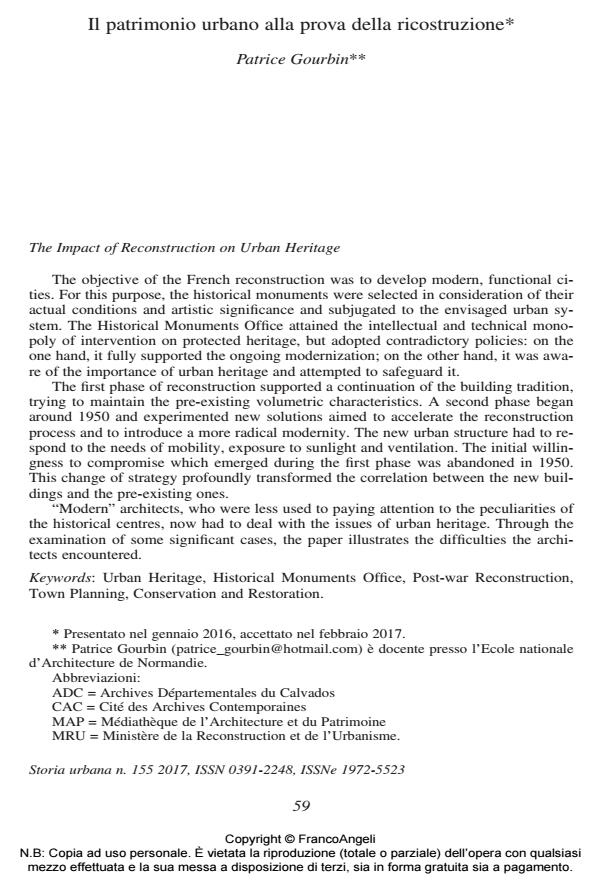Il patrimonio urbano alla prova della ricostruzione
Titolo Rivista STORIA URBANA
Autori/Curatori Patrice Gourbin
Anno di pubblicazione 2017 Fascicolo 2017/155
Lingua Italiano Numero pagine 22 P. 59-80 Dimensione file 2504 KB
DOI 10.3280/SU2017-155004
Il DOI è il codice a barre della proprietà intellettuale: per saperne di più
clicca qui
Qui sotto puoi vedere in anteprima la prima pagina di questo articolo.
Se questo articolo ti interessa, lo puoi acquistare (e scaricare in formato pdf) seguendo le facili indicazioni per acquistare il download credit. Acquista Download Credits per scaricare questo Articolo in formato PDF

FrancoAngeli è membro della Publishers International Linking Association, Inc (PILA)associazione indipendente e non profit per facilitare (attraverso i servizi tecnologici implementati da CrossRef.org) l’accesso degli studiosi ai contenuti digitali nelle pubblicazioni professionali e scientifiche
The objective of the French reconstruction was to develop modern, functional cities. For this purpose, the historical monuments were selected in consideration of their actual conditions and artistic significance and subjugated to the envisaged urban system. The Historical Monuments Office attained the intellectual and technical monopoly of intervention on protected heritage, but adopted contradictory policies: on the one hand, it fully supported the ongoing modernization; on the other hand, it was aware of the importance of urban heritage and attempted to safeguard it. The first phase of reconstruction supported a continuation of the building tradition, trying to maintain the pre-existing volumetric characteristics. A second phase began around 1950 and experimented new solutions aimed to accelerate the reconstruction process and to introduce a more radical modernity. The new urban structure had to respond to the needs of mobility, exposure to sunlight and ventilation. The initial willingness to compromise which emerged during the first phase was abandoned in 1950. This change of strategy profoundly transformed the correlation between the new buildings and the pre-existing ones. "Modern" architects, who were less used to paying attention to the peculiarities of the historical centres, now had to deal with the issues of urban heritage. Through the examination of some significant cases, the paper illustrates the difficulties the architects encountered.
Parole chiave:Urban Heritage, Historical Monuments Office, Post-war Reconstruction, Town Planning, Conservation and Restoration.
- Recent Articles on French History Jean-Pierre Hérubel, in French Historical Studies /2019 pp.154
DOI: 10.1215/00161071-7205281
Patrice Gourbin, Il patrimonio urbano alla prova della ricostruzione in "STORIA URBANA " 155/2017, pp 59-80, DOI: 10.3280/SU2017-155004